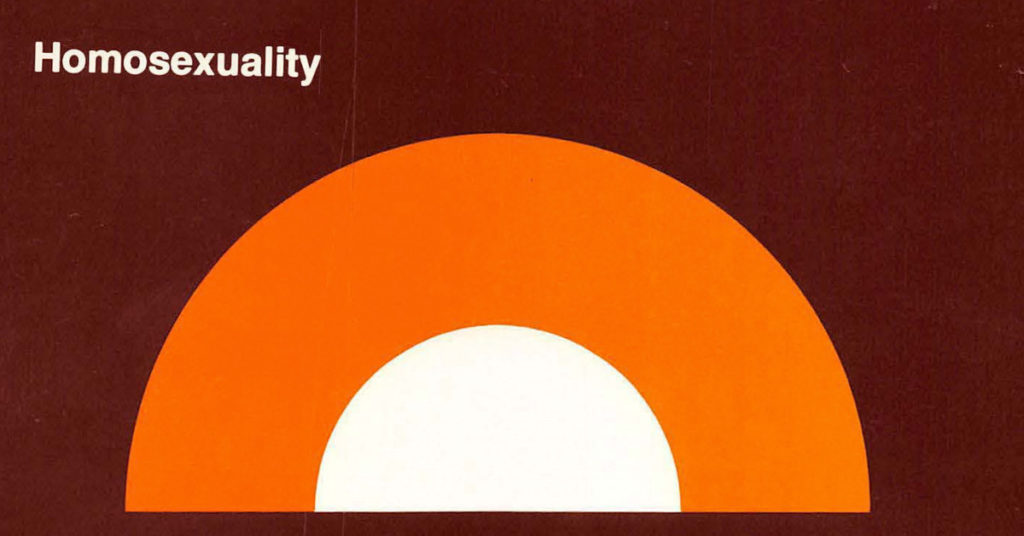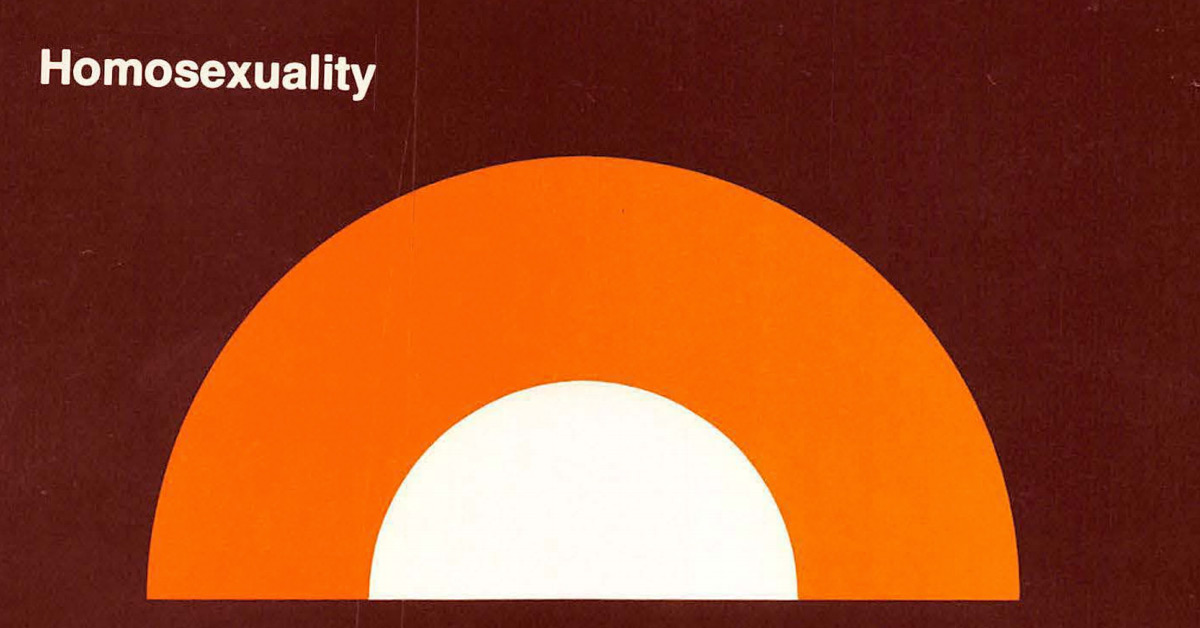How Far has the Mormon Church Come on Homosexuality Since 1981?


By Joel McDonald
On December 12, 2017, Mormon Leaks released a 1981 guide for local LDS priesthood leaders on how to address homosexuality among members of the Church. This guide no longer represents the official views of the LDS Church. Despite the fact that the Church today has explicitly renounced some of the positions found in the guide (such as that homosexuality is a learned behavior or a sinful choice and can be cured), those beliefs are still commonplace among LDS Church leaders and members. Many members of the LGBT Mormon community experienced trauma as a result of the practices promoted by this 1981 guide, and if you feel you might be triggered by exposing yourself to the language and beliefs in this guide — many of which the Church no longer endorses — we don’t recommend reading it. Nevertheless, reviewing what the Church was saying in 1981, and comparing and contrasting it with what the Church is saying now does show how much positive change has taken place for LGB Mormons since 1981. It highlights the importance of the ways Affirmation continues its 40+ years of work to foster greater understanding of LGBTQ+ Mormons and their families and friends and to promote positive change within the larger Mormon community.
Is Homosexuality a Choice? A Sin?
“Homosexuality is erotic or physical contact or attractions between members of the same-sex”, the 1981 guide informed leaders. “It may include thoughts or emotional attractions without outward sexual behavior.” Here we see that at the time this guide was produced, the Church did not distinguish homosexual thoughts from homosexual actions. When the guide continues informing leaders that “homosexuality is a sin”, that “any rationalization of homosexuality is wrong,” no distinction is made between attraction and acting on that attraction. Here we have perhaps the most significant change in how the Church understands and instructs leaders on homosexuality between 1981 and today.
Today, the LDS Church is careful to make the distinction between homosexuality, or same-sex attraction, and acting on that attraction. In 2012, the church launched mormonsandgays.org where it was first stated that “individuals do not choose to have such attractions.” In effect, the LDS Church in having this statement on a website they created was informing the world that their understanding of homosexuality now included a distinction between attraction and action. If same-sex attraction was not a choice, it could not be a sin. Today, the church’s website, Mormon and Gay, states that “feelings of same-sex attraction are not a sin.”
What Causes Homosexuality?
Before briefly discussing what the Mormon Church viewed as the causes of homosexuality in 1981, I think it is important to be reminded of what the medical community viewed as the causes of homosexuality around this time. Until 1973, homosexuality was viewed as a mental disorder by the American Psychiatric Association. The World Health Organization did not declassify homosexuality as a mental disorder until 1990. The church’s view of homosexuality and its causes were closely aligned to the general understanding of homosexuality in the medical community and public. The 1981 guide informs leaders that homosexuality was caused by a “disturbed family background,” “poor relationship with peers,” “unhealthy sexual attitudes,” and “early homosexual experience” including “early masturbation experiences” or being “introduced to homosexual experience by someone his own age or a few years older.”
Today, the LDS Church makes no attempt to define the causes of homosexuality. On the Mormon and Gay website, Elder Dalin H. Oaks is quoted as saying, “The Church does not have a position on the causes of any of these susceptibilities or inclinations, including those related to same-gender attraction.” This is significant. “The entire premise of this pamphlet is that homosexuals are broken and at odds with God,” shared Affirmation Board Member Ron Raynes. This isn’t the view of homosexuality anymore. LGB people aren’t broken and are “sons and daughters of God,” according to Mormon and Gay: Church Teachings. Just last month, Elder M. Russell Ballard shared his belief that gay and lesbian members of the church, “have a place in the kingdom and recognize that sometimes it may be difficult for you to see where you fit in the Lord’s Church, but you do.”
Can Homosexuality be Changed? Cured?
If the medical community at the time was in the midst of transitioning away from considering homosexuality as a mental disorder, they were also transitioning away from considering homosexuality as something that could be treated and possibility cured. This was something of a significant debate throughout the nineteenth and twentieth century. Not surprisingly, the church instructed local leaders that homosexuality was something that could be changed. “The amount of help that you as a priesthood leader can give depends upon the person’s willingness and desire to change. The person must repent of his homosexual behavior and control it by learning other ways of life.”
Priesthood leaders were encouraged to counsel homosexuals partly by helping them to set spiritual, social, physical, and self-discipline goals. The social goals are those which perhaps were the most damaging to LGB members as they were encouraged to “be in appropriate situations with the opposite sex, even if he has to force himself,” “begin dating and gradually increase frequency,” and emulate “appropriate masculine or feminine roles and practices.” While the guide doesn’t explicitly instruct leaders to encourage gay and lesbian members to marry the opposite sex, the concluding section of the guide reads, “Many written testimonies have been gathered from individuals who have overcome homosexual problems and found peace and success in dating, marriage, and Church activity.” Marriage to the opposite sex was the logical goal for changed homosexuals in the church in 1981.
“Everything in this 1981 manual flows from the assumption stated toward the beginning that homosexuality is a learned or chosen”, shared Affirmation Executive Director John Gustav-Wrathall. “When that is your premise, the result is terrible practice. Leaders were actually counseled to respond with ‘stern discipline’ if the gay person being counseled was perceived to have a ‘rebellious attitude,’ which might be any situation involving counseling gay members since the manual suggests the mere fact of being gay could be a sign of rebelliousness. No surprise that the manual counsels an approach that is completely structured around ‘conversion therapy.'”
Today, a mixed-orientation marriage is not seen as an outcome of homosexuals being changed or cured and is not recommended as a solution for LGB members. Elder Dalin H. Oaks in 2015 stated that leaders “definitely do not recommend marriage as a solution for same-gender feelings. No, it’s not a therapy. In times past, decades ago, there were some practices to that effect. We have eradicated them in the Church now.” The church doesn’t necessarily discourage mixed-orientation marriage either if the couple involved believe it’s the best decision for them and it is not done under false pretenses.
The Gay and Mormon website states that “the intensity of same-sex attraction is not a measure of your faithfulness. Many people pray for years and do all they can do to be obedient in an effort to reduce same-sex attraction, yet find they are still attracted to the same-sex.” The church doesn’t seem interested in people trying to change their attractions but does continue to be concerned about whether members act on those attractions. “The intensity of your attractions may not be in your control; however, you can choose how to respond.”
The Persistence of Damaging Ideas
Officially, what the LDS Church understands and teaches about homosexuality might have changed in 40 years, and hopefully will continue to change in a positive way for LGB (and transgender) members. Unfortunately, old, damaging, ideas still persist among church members and local leaders.
“As of February/March 2016, local leaders were still encouraging mixed-orientation marriages,” shared Sarah Broat. “That’s when the sealing cancellation with my ex-husband went through, and my bishop immediately encouraged me to start looking for a new one, knowing I am a lesbian. I was also told that I would be ‘physically and spiritually destroyed’ for not believing homosexuality was apostasy.”
“This guide explains so much. These ideas persisted for at least the year 2001 when I was applying to BYU. When I came out to my bishop at the end of 2000, he followed many of the guidelines and brought up that he had been trained recently on how to deal with members struggling with homosexuality,” shared Alexander Shafer. “The bishop and therapist told me that family dynamics were responsible for my homosexual feelings and that I could be cured. I can see clearly now that these ideas influenced my decision to marry someone of the opposite sex and go back into the closet until recently.”
Affirmation is working to dispell these damaging ideas by providing resources and training for local LDS leaders who are seeking to care for LGBT members in their wards and branches. Since 2015, a track for leaders has been included in the Annual Affirmation Conference.
Progress Not Perfect
While looking at where the Church was in 1981 highlights significant progress, there is still much progress to be made. Missing completely in this discussion are the challenges transgender Mormons face in the church. And it is impossible not to reference the pain and trauma that have followed the policy changes of November 2015. Still, the guide is a testament to the positive change that has occurred from when it was published in 1981 and a reminder that future change is possible.
The good news is, if the Millennium starts within the next few years, and I live to the age of Methuselah, I might yet see enough positive change during my lifetime to make a difference.
The specific degree of their prior error should indicate the hypothetical possibility of the degree of their current error to anyone actually seeking truth and righteousness instead of presumption.